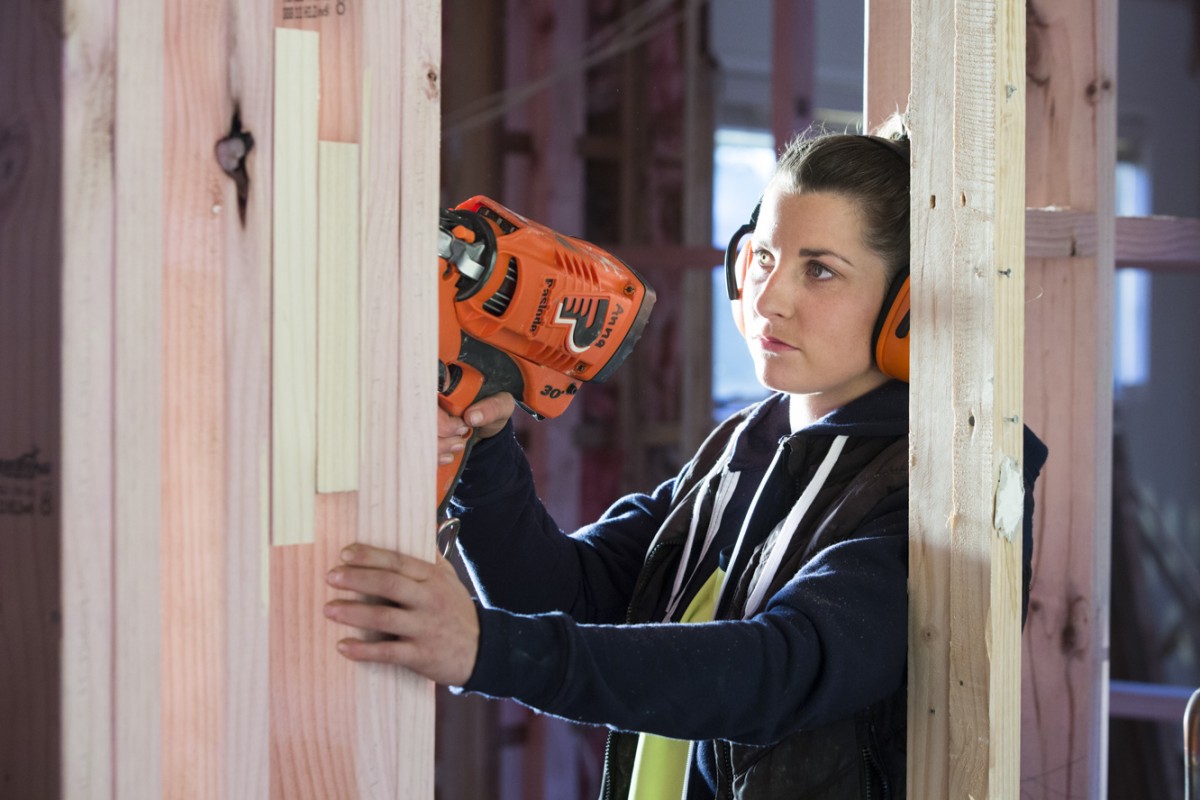Meet the minister
20 Mar 2018, Industry News, LBP & Regulation

This month, we interviewed Building and Construction Minister Jenney Salesa (who also holds a number of other portfolios) about what she’d like to achieve in her role and where she sees room for improvement in New Zealand’s building system
Q: What do you hope to achieve as Building and Construction Minister?
To build an effective building regulatory system that ensures the buildings New Zealanders use are safe, healthy and durable, and which also supports a productive building and construction sector. This will help enable the sector to build 100,000 affordable homes under the Government’s KiwiBuild policy.
I am working to establish a ministerial group on the Construction Workforce, which will develop a skills strategy for the construction sector. I am also looking for opportunities to further increase capability and capacity in the sector. We know there is an immediate need for skilled workers, but I am also looking to the future to provide skilled construction workers to meet New Zealand’s longterm needs.
Q: What are your responsibilities as Building and Construction Minister, and how do they differ from your responsibilities as Associate Minister of Housing and Urban Development?
The Government wants to make sure people have healthy, secure and affordable homes that meet their needs within thriving communities.
As Associate Minister of Housing and Urban Development, I’ll be supporting a broad programme that looks across the wide range of elements required to make this happen – land, infrastructure, development and construction.
My Building and Construction portfolio has a more targeted focus. It is about regulating building work in New Zealand to protect the public’s safety and to support sustainable development and people’s health, independence and wellbeing.
The building regulatory system influences the construction market by setting performance requirements for building work and processes for council enforcement and construction contracting, and by regulating the people who work in the sector and the building products they use.
Q: What do you think about New Zealand’s current building regulation system?
We have a performance-based system, which specifies how buildings should perform rather than how they should be built. The reason for this is to allow people to innovate by using new designs, methods, products and technologies. This is the right approach to take.
The Building Code is constantly being monitored and refreshed to reflect advances in research and technology. However, the current Building Code system is complex and can be difficult for people to access and understand.
I can see there is room for improvement, and have started work on simplifying how people access and use this system. The performance requirements are also just one part of a complex system. My aim is to take a methodical approach to reform across all parts of the building regulatory system. I will use the opportunity KiwiBuild presents to try out new ways of working, to drive transformation of the construction sector and regulatory system.
Q: What would you like to change about the building regulation system?
I have identified some clear opportunities for improvement. One priority will be supporting KiwiBuild by getting rid of obstacles and inefficiencies that would slow progress and by incentivising innovation and new approaches, including prefabrication and modular construction. I’ll also be progressing broader system reforms that are already under way.
These include a review of the system for regulating building products, making it simpler for people to access and understand the Building Code system and ensuring the pathways for demonstrating compliance are fit for purpose.
Q: How do you think the Government can better work with the building industry to improve its productivity?
In addition to making sure the building regulatory system serves its purpose of protecting the public in a way that’s as speedy and efficient as possible, I’ll be actively engaging on the sector-led Industry Transformation Agenda. This provides a collaborative vehicle for government to help support industry to raise productivity.
Q: Are there any plans in place to introduce a national consenting system and, if so, when is it likely to be rolled out?
We’ll be looking to explore new and innovative ways of doing consenting, but it’s very early days. We’re starting by working closely with the sector and councils in fast-growing areas such as Auckland to explore what can be done to streamline consenting for KiwiBuild in the short term.
Then we’ll be looking at areas where the legislative settings may need to change to support the industry to transform. At this stage, it’s too early in the process to say what the end results of that work will be. In the meantime, we’re supporting council-led initiatives such as GoShift, which sees over 20 councils clustering together to develop consistent, shared systems and resources for building consenting.
Q: What do you think about mandatory guarantees for builders and are they something you would like to see introduced to the industry?
Looking at the way risk, responsibility and liability are distributed in the building process is one of the priority items on my work programme for the next three years.
I’ll be considering options that ensure builders take appropriate responsibility for their work, that prevent councils from being pushed to become over-cautious, and that protect homeowners from risk if things go wrong. This will include looking at the way guarantees and insurance products are used.
However, we’re not yet at the stage where we can say what the Government’s role will be in developing the market for guarantees and insurance products. In the meantime, I encourage homeowners and builders to ‘Build It Right’ by making sure they understand their rights and responsibilities, including the consumer protection measures that are already in place.
There’s more information available at www.building.govt.nz.
Q: How successful do you think the LBP programme has been and are you looking at ways it can be improved?
It’s important to have a way to make sure the people who carry out or supervise building work, especially Restricted Building Work, are competent and accountable, so that the public can make informed choices about who to employ for building work.
The LBP scheme now has in excess of 25,000 members, and represents a big step forward in achieving these goals. It’s also important to make sure we understand exactly how well the scheme is performing and whether it remains fit for purpose, which is why MBIE is undertaking an evaluation of the scheme’s first ten years of operation.
The evaluation is set to be complete in June 2018.
In the meantime, MBIE, in conjunction with Building Practitioners Board, is continuously looking at ways to improve and make the scheme function better.
Q: Given the current skills shortage, how do you think more women can be encouraged into building and related trades and is that an area you are planning to do some work in?
At the moment, the make-up of the building and construction industry doesn’t reflect the make-up of New Zealand. There’s an opportunity to help more groups who are currently underrepresented in the industry, such as women, to take advantage of the opportunity that’s there, particularly with KiwiBuild getting under way.
In my role as Associate Minister of Education, I will be working with building industry stakeholders, as well as the Ministerial Group I mentioned earlier, to develop a skills strategy to ensure the sector has a workforce that is fit for purpose – as part of that work, I will be looking at how we can encourage and support all kinds of people, including women, into the workforce.
Register to earn LBP Points Sign in




